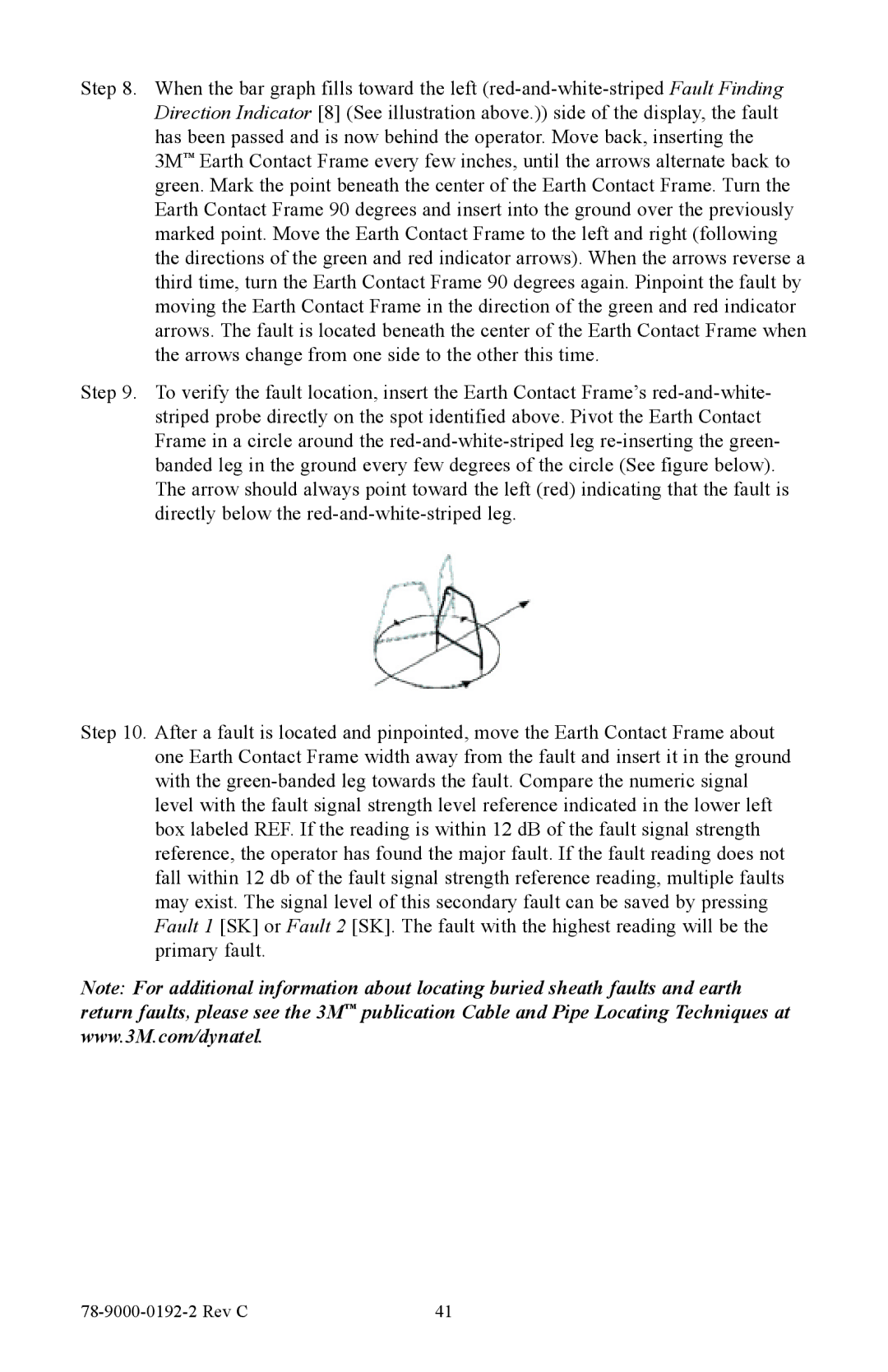
Step 8. When the bar graph fills toward the left
3M™ Earth Contact Frame every few inches, until the arrows alternate back to green. Mark the point beneath the center of the Earth Contact Frame. Turn the Earth Contact Frame 90 degrees and insert into the ground over the previously marked point. Move the Earth Contact Frame to the left and right (following the directions of the green and red indicator arrows). When the arrows reverse a third time, turn the Earth Contact Frame 90 degrees again. Pinpoint the fault by moving the Earth Contact Frame in the direction of the green and red indicator arrows. The fault is located beneath the center of the Earth Contact Frame when the arrows change from one side to the other this time.
Step 9. To verify the fault location, insert the Earth Contact Frame’s
Step 10. After a fault is located and pinpointed, move the Earth Contact Frame about one Earth Contact Frame width away from the fault and insert it in the ground with the
Note: For additional information about locating buried sheath faults and earth return faults, please see the 3M™ publication Cable and Pipe Locating Techniques at www.3M.com/dynatel.
| 41 |
